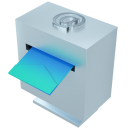Python2
>>> >>> isinstance(b'abc', bytes)True>>> >>> isinstance(b'abc', str)True>>> >>> isinstance('abc', str)True>>> >>> isinstance('abc', bytes)True>>> >>> >>> >>> 'abc'.startswith('ab')True>>> >>> b'abc'.startswith('ab'.encode())True>>> >>> b'abc'.startswith('ab')True>>> >>> 'abc'.startswith('ab'.encode())True>>>Python3
>>> >>> isinstance(b'abc', bytes)True>>> >>> isinstance(b'abc', str)False>>> >>> isinstance('abc', str)True>>> >>> isinstance('abc', bytes)False>>> >>> >>> >>> 'abc'.startswith('ab')True>>> >>> b'abc'.startswith('ab'.encode())True>>> >>> b'abc'.startswith('ab')Traceback (most recent call last): File "<pyshell#25>", line 1, in <module> b'abc'.startswith('ab')TypeError: startswith first arg must be bytes or a tuple of bytes, not str>>> >>> 'abc'.startswith('ab'.encode())Traceback (most recent call last): File "<pyshell#27>", line 1, in <module> 'abc'.startswith('ab'.encode())TypeError: startswith first arg must be str or a tuple of str, not bytes>>>扩展学习
python2中有一种类型叫做unicode型,例
两者返回的类型都是unicode型
而在python3中,所有的字符串都是unicode,所以就不存在单独的unicode型,全部都是字符串型
但是python3中多处一种字符串
以上就是相关的知识点内容,如果大家有任何补充可以联系小编。














































 热门文章
热门文章






